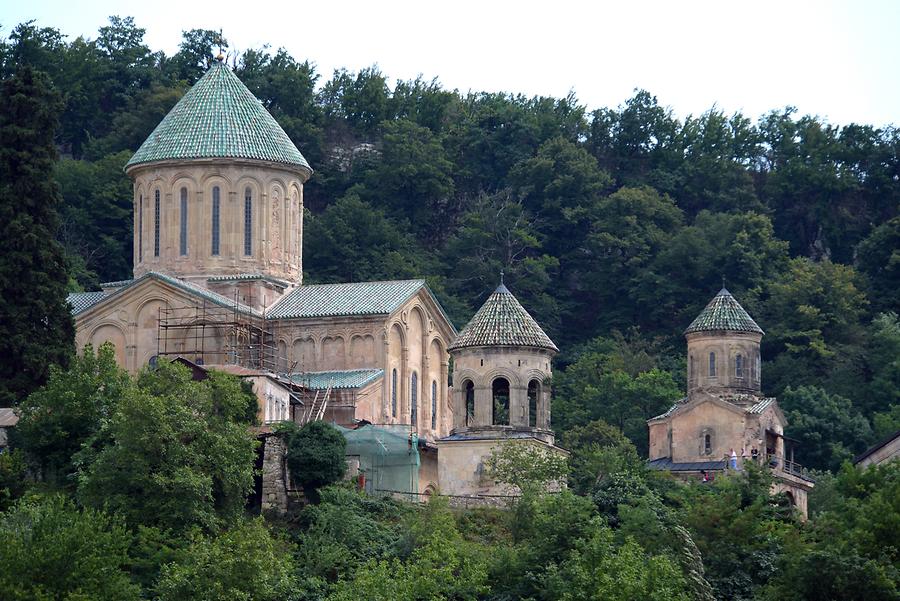Gelati Monastery#

Gelati Monastery, July 2018, © Gerhard Huber, under CC BY-NC 4.0 +Edu
Am gegenüberliegenden Hügel ließ König Dawit IV. der Erbauer im 12. Jahrhundert die Klosteranlage und Akademie von Gelati
Gellati Monastery,Georgia
errichten. Er lud namhafte Gelehrte ein, hier Philosophie, Rhetorik, Grammatik, Geometrie, Astronomie und Musik zu unterrichten. Schnell mauserte sich Gelati zur berühmtesten Schule des georgischen Königreiches, erwarb sich den Ruf eines 'neuen Athens' und trug wesentlich zum Glanz von Georgiens Goldenem Zeitalter bei. Die humanistischen Ideen der Gelehrten waren der damaligen Zeit um Jahrhunderte voraus und nahmen in gewissem Sinne die west-europäische Renaissance vorweg. Auch König Davit schätzte die intellektuelle Atmosphäre und suchte sich hier eine Grabstätte aus, jedoch nicht unter einem exponierten Stein, sondern im Boden des Südtores. Noch im Tode wollte Georgiens glanzvollster Herrscher seinen Landeskindern Demut beweisen und legte sich ihnen zu Füßen. Wer das Gelände betrat, musste über das Grab des Königs schreiten.
On the opposite hill, King Dawit IV the Builder erected the monastery complex and academy of Gelati
Gellati Monastery,Georgia
in the 12th century. He invited well-known scholars to teach philosophy, rhetoric, grammar, geometry, astronomy and music. Gelati quickly evolved to become the most famous school in the Georgian kingdom, gaining the reputation of a 'new Athens' and greatly contributing to the glory of Georgia's Golden Age. The humanist ideas of the scholars were centuries ahead of the time, somehow anticipating the Western European Renaissance. King Dawit, too, appreciated the intellectual atmosphere and chose a tomb here, not under an exposed stone, but on the ground under the south gate. Even after death, Georgia's most brilliant ruler wanted to prove humility to his natives and lay at their feet. Whoever entered the area had to walk over the tomb of the king.